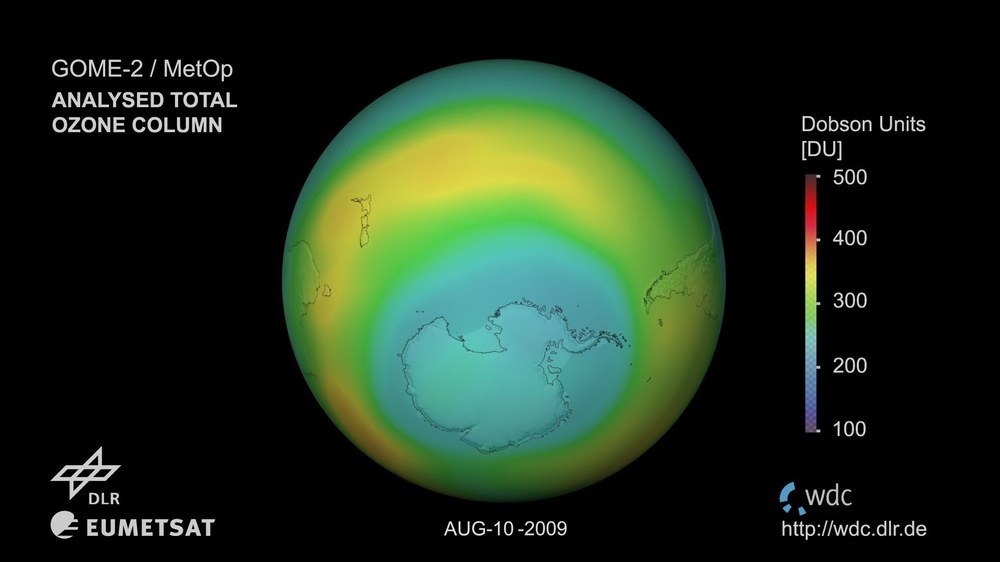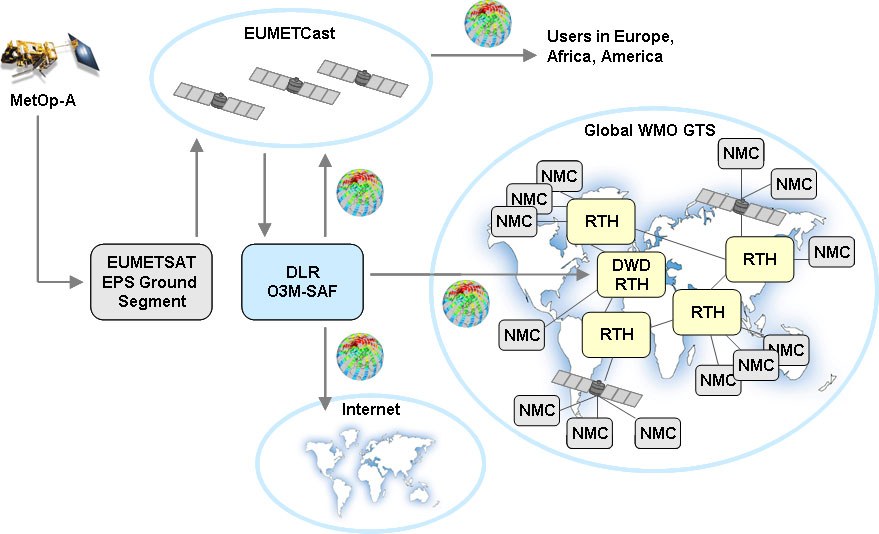DLR disseminates global atmospheric composition data in near-real-time via the WMO Global Telecommunication System
As part of the Ozone and Atmospheric Chemistry Satellite Application Facility (O3M-SAF), the DLR Applied Remote Sensing Cluster operates in near-real-time the processing of trace gas products since the start of the GOME-2/MetOp mission. On behave EUMETSAT, total column densities of different atmospheric constituents and cloud parameters, such as total ozone, total and tropospheric nitrogen dioxide, sulphur dioxide, and bromide are provided continuously on an operational base.

Besides the dissemination via the satellite-based broadcast system EUMETCast and the internet, the GOME-2/MetOp data is now also being disseminated through the WMO Global Telecommunication System (GTS). The trace gas products are disseminated since August 2009 worldwide via the GTS Regional Telecommunication Hub operated by Deutscher Wetterdienst (DWD).

The WMO GTS is composed of a dedicated network of surface-based and satellite-based telecommunication links and centres operated by countries 24 hours a day, seven days a week all year round. It interconnects all National Meteorological Centers (NMC) for round-clock reliable and near-real-time collection and distribution of all meteorological and related data, forecasts and alerts. WMO GTS is the backbone system for global exchange of data and information in support of multi-hazard, multipurpose early warning systems, including all meteorological and related data; weather, water and climate analyses and forecasts; tsunami related information and warnings, and seismic parametric data. WMO is building on its GTS to achieve an overarching WMO Information System (WIS), enabling systematic access, retrieval, and dissemination and exchange of data and information of all WMO and related international Programmes.
The GOME-2/MetOp atmospheric composition products delivered by DLR are of primary importance not only for the global climate research. The chemical constitution of the atmosphere is also a decisive input for weather forecasts and air quality analysis. Even civil aviation control has interest in this data to be able to monitor volcanic plum clouds through their sulphur dioxide concentration. These clouds can be very dangerous and circulate around the earth at flight altitude.
In addition to the dissemination in near-real-time, the DLR controls the quality of all processed data products, archives them for the long term and makes them accessible through the online user interface EOWEB and the World Data Center for Remote Sensing of the Atmosphere (WDC RSAT).
